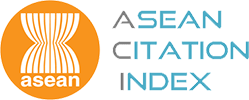Conference Report The Second Tourism And Hospitality International Conference (Thic 2014)
Abstract
In the morning of 5 May 2014, over sixty people took their seats in the cosy conference hall of the Holiday Villa Beach Resort and Spa Langkawi, to witness the opening ceremony of the THIC 2014 on the theme: Dimensions of Sustainability in the Planning, Development and Management of Tourism and Hospitality Industry. The Deputy Secretary General, Ministry of Tourism and Culture Malaysia, Rashidi Hasbullah, officiated at the ceremony and joined the conference Chair Dr. Shaharuddin Tahir in welcoming participants from over a dozen countries, mostly Malaysians, Indonesians and Thais, who were also collaborators in organising the meeting. As a display of regional fraternity, the Thai and Malaysian contingents took turns to entertain attendees with a repertoire of traditional dances. This social warm up was to be continued in the evening when UUM Dean of Tourism and Hospitality, Dr. Basri Rashid, played host at a dinner given by the Langkawi Development Authority (LADA).
The theme on sustainability was a timely choice given the growing interest in Langkawi and the industry at large in green tourism and the issues of sustainability. Altogether, sixty-seven papers were presented but few addressed the theme explicitly. To be sure, most papers touched on aspects of tourism and hospitality management which were linked, directly or indirectly, to the general concept of sustainable development. Most of the papers that dealt with sustainability issues were contributed by tourism researchers and this preponderance was well reflected in the keynote addresses with three of the four papers focusing on tourism. The only keynote address from a hospitality perspective was a presentation by Dr. Yusak Anshori (Universitas Ciputra) who spoke on sustainable hotel business through environment friendly practices such as a ban on smoking and commercialised recycling of waste material. He observed that although there was a general skepticism if not rejection of the radical approach to ban smoking in the Surabaya Plaza Hotel while he was in charge, the management was able to secure ample sustenance from the segment of market that favoured a smoke-free facility.
The three keynote papers that discussed sustainable tourism began with Kadir Din’s address which provided an overview of the concept, current thinking on the subject, and its application on the conference site, Langkawi Island. In his view, the three pillars of sustainability as commonly presented in the literature were arguably too general to capture the influence of context-specific features which may appear to be more localised such as location in areas prone to natural hazards, inept leadership, political instability and technological change. In the case of Langkawi, he considered resource limitations (water, space, power, food supply) to be possible impediments to sustainable tourism, besides a dozen other dimensions which may constrain the capacity of the island to cater to the needs of the visitor. The second address by Kalsom Kayat traced the evolution of the concept “sustainable tourism development†which was linked to the concept of balanced development as promulgated through activities organised by the Club of Rome in 1972.
The concern with economic growth was whether it could be sustained in terms of the positive and negative consequences, inluding the impacts of development on the well being of future generations. A desirable model for community-based tourism would be a situation in which the entire community consisting of heterogeneous groups of stakeholders are empowered to plan for their own future with collective community welfare in mind. To do this, there must be appropriate policies, standards and institutional arrangements. As illustrations, Kalsom described examples from four different contexts in Thailand, Nepal, China and Fiji, which together presented a range of cases with different literacies, capacities and degrees of consensus in the community, indicating non-homogeneity among host stakeholders. Institutional support from the state is thus clearly needed to harmonise the needs of hosts and guests for now and the future.
The next keynote speaker, Manat Chaisawat, is a familiar figure in the ASEAN tourism circle. His long established involvement in the tourism training gave him enough exposure to recall many regional pronouncements and institutional networks which were always promising on paper, but left much to be desired on the ground. Acharn Manat recounted many initiatives articulated in documents issued by the ASEAN Economic Community (AEC), and Indonesia, Malaysia, Thailand Growth Triangle (IMT-GT) since the 1980s. These regional bodies organised meetings where roadmaps, blueprints and strategic development models were presented, but as the THIC 2014 conference participants were fully aware, there had hardly been much meat that could be appreciated on the ground other than the initiatives which arose from private enterprises. Manat and the other keynote speakers were fortunate to be able to enjoy gratis the luxury of lodging at the Frangipani Langkawi Resort & Spa where innovations towards sustainable hospitality were being experimented as he had happily complimented during his keynote speech. The beaches to the east of Frangipani were probably cleaner than Waikiki, thanks to the operator Anthony Wong who continues to pursue green hospitality as his lifelong corporate goal.
My own quick stroll on the beach abutting the venue of the THIC 2014 conference however, revealed a contrasting situation. I saw site occupiers engaged in open burning at the edge of a beachfront property. Along the beach there were plastic and styrofoam litters that could be seen on the spot which was ostensibly one of the best beaches on the island. The idea of acquiring a strip for a pedestrian walk, in line with the Langkawi Blueprint initiatives was strongly opposed by the local community. In this sense, Kalsom was correct in the observation that there was rarely a consensus in the community but there must be a common understanding among locals, tourists and industry insiders, before any blueprint can be effectively translated into a harmonious management of the environment. Manat’s expressed desire to see the development of a sacred heritage trail in honour of an eminent Buddhist monk Luang Pu Tuad was understandable given his religious background. The challenge here, however, was how to persuade the host community to share his sentiment that such a trail which would circumambulate non-Buddhist areas would be for the common good. My own reaction, from the lens of a believer in the wasatiyyah (moderate) approach, was that it was a great idea. Discussing the subject after his presentation, I also raised the need to promote heroines Mok and Chan, the two Malay sisters who are valourised in a downtown statue, in honour of their contributions to the provincial government of Phuket during their war of liberation from Burma. The last time I met Manat was in Pusan (Korea) where we were guests of honour as founding members of the Asia-Pacific Tourism Research Association. I subsequently attended a tourism conference and later a meeting he organised in Phuket which allowed me the opportunity to visit Kamala Beach where Aisyah the descendent of Mahsuri lived. Such was my networking with an old scholar who is now in his seventies. As we parted with a big hug at the Padang Matsirat airport, my hope was that we will meet again, so that we can continue to “gaze across the cultural border†as I had written in a presentation entitled “Gazing across the border from Sintok†in a regional meeting of a similar kind, held both in Sintok and Haatyai several years ago. My desire is that such meetings will strengthen interest among researchers in Malaysia to look beyond the Malaysian context. In so doing, they will also be interested in looking beyond the confines of their own cultural sphere, to be in a position to know and eventually accept the other.
For me, this is the only way forward for a harmonious, and through that, a prosperous Malaysia.
At the risk of being stigmatized by Non-Muslim readers, I must confess that I am fully committed to Prophet Muhammad’s teaching that one should not subscribe to groupism or asabiyyah. This is the way forward for a sustainable Malaysian society.
If we go by the theme of the conference, there seems to be little interest in interrogating any of the multifarious dimensions of sustainable tourism, not even in the three presumed pillars—economic, social and environmental. Looking at the key words of papers, only six of the sixty-three papers mentioned sustainable or sustainability and among them only three had mindfully used the term.
When a series of announcement on the conference was made almost a year earlier the subscript was intended to draw a wide audience who would be in the position to share ideas on their respective perspectives on sustainable tourism development since the concept in the subscript can be read as a catch-all tagline intended to persuade prospective participants to attend the gathering. In this sense, the organisers had succeeded in securing that critical mass of some eighty attendees, but in terms of sharing ideas and networking on sustainable tourism and hospitality the THIC series must await many more meetings before this interest in grand ideas and frameworks can gather the momentum it deserves. To be sure, as Kalsom said of the non-homegeneity of the host community, there was a non-homegeneity of attendees, with some showing spirited interest in the sustainability theme while others were more interested in the experience visiting Langkawi, period.
As the meeting came to a close with a brief parting message from the conference Chair Shaharuddin and Dean Basri, we were left with a measure of excitement–on the prospect of meeting again for the THIC 2015 in Surabaya. As I write this report, there was an announcement on TV on the discovery of debris from Air Asia carrier flight QZ 8501 which left Surabaya two days earlier. It left us ordinary mortals with a tinge of sadness, but now that more people know the city called Surabaya, we hope our prospective co-organiser at Universitas Cipura will rekindle the regional IMT-GT spirit that we have tried to build together in Phuket, Haatyai and Langkawi.









